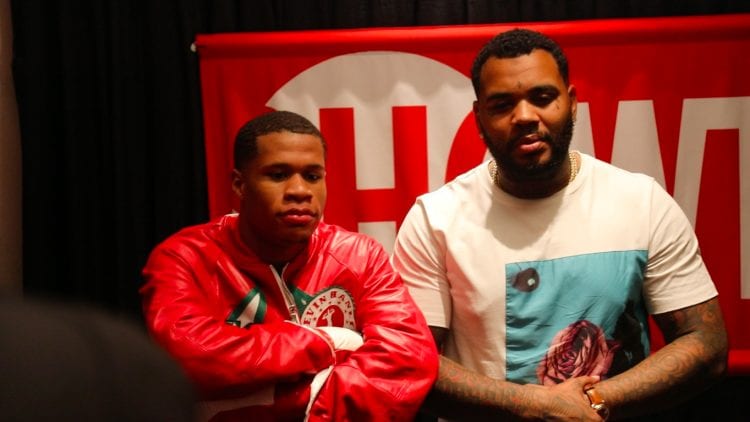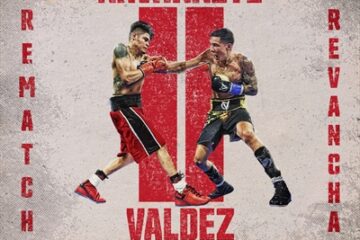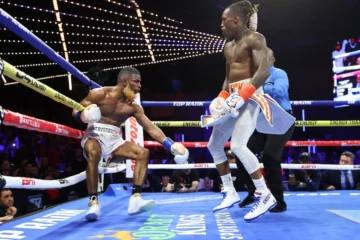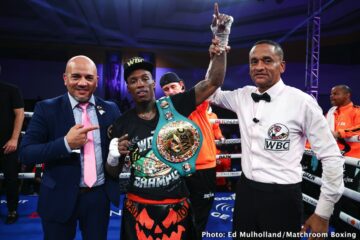The Fighter Empowerment Era in Boxing – how Ryan Garcia & Devin Haney changed the game.
Boxing has always been the red-light district of sports, and with that has been seen as a sport that often leaves those involved in it, who choose it a for a profession, worse for wear than before entering. Yet, as we head into 2020, we are starting a uniquely bold, frontier that seemingly is unprecedented in the sport of boxing. That is players, well, fighters now hold a large portion of the power.
Before we dig deep, and go in, let’s look at other sports, primarily the National Basketball Association, whom has seen LeBron James essentially control where he goes and what he does over the past fifteen years, Kevin Durant who uses his social media presence as creative outlet for his own content, which has a bigger reach than many networks, and Dame Lillard, who has done the unthinkable becoming a well-respected rapper and one of the best NBA players in the game currently. What do they all have in common? Platforms that don’t solely reside based around the NBA or the team they are associated with, in short, they’re parlaying their skills, into businesses that speak directly to those who enjoy their athletic achievement as well as their expression on and off the court.
Case Study #1 – Ryan Garcia
Let’s begin by looking at Ryan Garcia, a high-level amateur, who turned professional in 2016 in Mexico. Despite winning the 2016 youth nationals beating Bryan Lua and Delante “Tiger” Johnson, in the process, Garcia was fighting on shows in Tijuana, a local Bash Boxing card, and one Top Rank show, before making it on a Golden Boy card, as Golden Boy would eventually become Garcia’s promoter. Despite talent, Garcia didn’t see his ascension in the sport, until he created his own fortune, by taking a page from Justin Bieber, and making his life public, sharing funny moments, intense moments, essentially sharing everything, that young people who are not typically drawn to boxing, became fans of his social media, like it was a television show. Garcia had a child-like innocence along with aspects of a teen-star that caught fire on the internet.
It isn’t surprising that a young man from Victorville, Ca, who spent his formative high school days being homeschooled, would be able to reach out to the world and find people to interact with, as this is a trope with many viral sensations, like ZexyZek, a popular gamer on YouTuber, who made a channel to simply meet new people.
Garcia is unlike anything we have seen in boxing as we have had heartthrob boxers, but none that have utilized their appeal to a social media platform with direct numbers that can be used to be monetized. In short, his four million followers on Instagram can be shown to advertisers and he can profit off his following without being in the ring, and for him to be in the ring, concessions need to be made, since his platform essentially has a wider reach than his promoter, Golden Boy Promotions, which has one million followers.
So, Garcia is an interesting case of the modern decade, as he is a young man, with a ton of power, based on his ability to navigate the internet, that is yet to be seen prior. Boxing is a sport often thought of being in the stone-age with Garcia being ahead of most promoters in terms of promotion in the virtual world, so in many ways he holds the power in most situations as his platform and fan-base is needed, and what demands will he make as he gets older and fully releases what he has.
For the time being, money can be exchanged for his following, but what happens when money isn’t enough, what happens if partnership equity goes into the discussion, or even furthermore to be in the process of making the decisions for the companies future. As the world becomes more and more cellphone-based, influencers on the biggest consumer of content, phones, will now be in positions of power, unseen before.
Case Study #2 – Devin Haney
Devin Haney like Ryan Garcia built his following from his childhood onward on the internet, but unlike Garcia, a lot of Haney’s following stems from his sparring videos which are posted on his social media platforms, showing him beating up people in the gym and being around famous rappers and celebrities. If Garcia is the Disney channel boxer, Haney is the fighter that those with a bit of edge will gravitate towards.
Haney has turned his following into huge paydays and a world title. Haney just made a million for his last boxing match, per the California State Athletic Commission, and was award the WBC lightweight world title, which some found controversial since he was elevated from interim champ to world champion without a bout, personally I have no issue.
Haney is a fighter, whom every fighter in the game knows, and has known for a long time. Haney ingeniously developed a plan to craft his journey with famous trainers, celebs and sparring notable people, all for public consumption that has played out like a well-crafted novel or movie, as those who have followed his journey on Devin Haney TV, myself included, feel as though they know Devin Haney even if they haven’t met him since the moments are so candid and real.
At 490K followers on Instagram, and a following that transcends boxing, as Lil Meech, Kevin Gates and Lil Durk have all been featured on his social media feeds, each of whom has large followings outside of boxing, Haney is uniquely original and different than any other boxer in terms of marketing.
On top of all of that, Haney never signed to a promoter, proving to be the ultimate example of player empowerment as he kept true to his own promotional entity of Devin Haney Promotions, forming a partnership with Eddie Hearn’s Matchroom Boxing to fight exclusively in the United States on DAZN. Haney has leveraged his capital from his social media following and performances into the ring into the best example of finical independence from a social media following in the sport of boxing we have seen yet.
Case Study #3 Canelo Alvarez
The most obvious example and the most powerful entity in all of boxing is Canelo Alvarez, who draws the most attention, as well as merits the largest paychecks. The future hall-of-famer might be on his way to being the greatest Mexican boxer ever, and with that has simply called his shots along the way, whether it was forcing Golden Boy Promotions to make the bout with Erislandy Lara, facing Sergey Kovalev when people thought it was crazy, or not giving Gennady Golovkin a third fight, no one has more power in boxing than Alvarez, who is this biggest breadwinner in the sport as a whole, creating retirement packages for many fighters based off the purses his opponents get from his bouts.
What does this mean going forward?
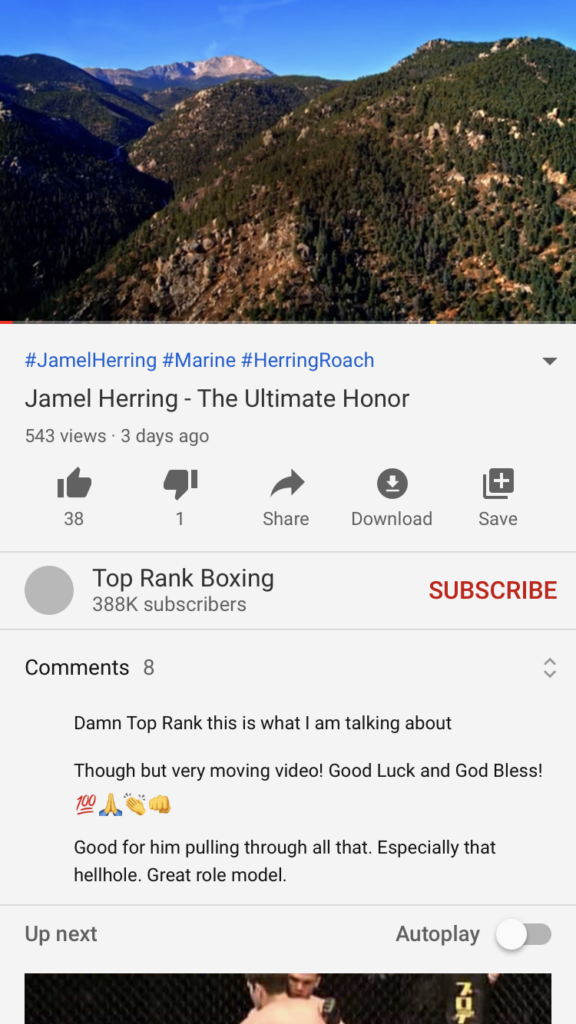
What does this mean going forward for fighter without a following?
We have seen tons of examples, at Top Rank a fighter like Jamel Herring comes to mind, who had 450 views on a special that ran on ESPN’s YouTube page over a Veteran’s Day weekend in which he was the main event of a world title fight that Saturday, a bout he won and dedicated the victory to the Marines, a group he proudly belongs to. Herring is a great fighter, an Olympian, a world-champion, but at age 34, he doesn’t have the connection to young people like Haney or Garcia, and his leverage simply comes down to ticket sales, gate, and winning fights in the ring to further his legacy.
The big issue with a fighter like Herring is, in an era in which Donald Trump is our President, it seems the general public wants “hyperrealism” as opposed to opinions that similar eerily similar to the company line, which seems to permeate Herring’s feed outside of sincere stories from when he served this country.
A better example of social media hurting a fighter is Pablo Cesar Cano with roughly 4k followers and rarely any exclusive content on his feed, his win over Jorge Linares has come-and-gone largely by his anonymous footprint on the internet. Unlike, Herring who interacts with people, but mostly in his own age bracket and older, Cano seems to be an old-school fighter who is need of someone to run his own social media accounts to get it to the world-class level his social media deserves to be at. Sadly, in this day and age, social media is very important, and that without constant in-ring time on television and/or stream, great achievements are forgotten.
The question is, will the fighters who are world-class, but do not have a following find themselves in other fighter’s hometowns fighting in great athletic feats, but also lacking that dynamic following that creates iconic stars making them the perennial undesirable fight. It feels as though with the advent of social media we are seeing a class-divide amongst fighters in terms of competency in forms of new media and those who are stuck in the past or even worse, just viewed as the past.
The new valued currency is the virtual new world of social media as those numbers can be directly shown to advertisers as the value one brings to an aforementioned brand can be tangible and explained promptly. Yet, with this, what happens to those who are shy, not tech-savvy or largely unknown. It feels that bigger fight promotions are becoming more and more fight distributors, allowing fighters to perform on their shows and giving them a form of distribution for the fight to be watched, a media workout and a press conference, but a lot of the promotion is up to the individual fighter, which is a modern concept. Days of television adverts are seemingly gone, as the new ad is an engaging social media feed, video or photographs engaging an audience.
As some gain wealth with their new fond empowerment others will have to find ways to survive in this new frontier of boxing. One thing is for sure, the amount of people who derive enjoyment from the content of a fighter outside of the ring, is now more important than ever.

